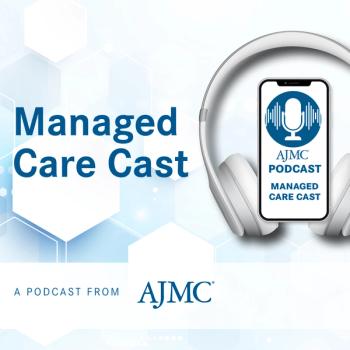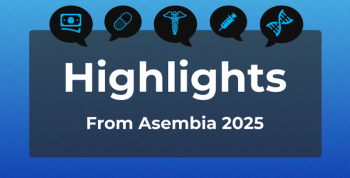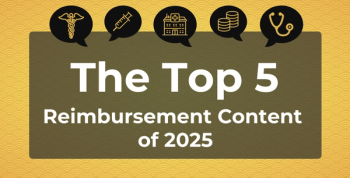
The American Journal of Managed Care
- November 2018
- Volume 24
- Issue 11
Cost of Pharmacotherapy for Opioid Use Disorders Following Inpatient Detoxification
The mean 24-week cost per participant was $5416 for extended-release injectable naltrexone (57% detoxification, 37% medication, 6% provider/patient) and $4148 for buprenorphine-naloxone (64% detoxification, 12% medication, 24% provider/patient).
ABSTRACT
Objectives: To estimate the costs of providing extended-release injectable naltrexone (XR-NTX) and buprenorphine-naloxone (BUP-NX) following inpatient detoxification using data derived from a multisite randomized controlled trial at 8 US community-based treatment programs.
Study Design: Cost data were collected for 3 intervention phases: program start-up, inpatient detoxification, and up to 24 weeks of medication induction and management visits (post detoxification). Cost analyses were from the healthcare sector perspective (2015 US$); patient costs are also reported.
Methods: We conducted site visits, administered a cost survey to treatment programs, and analyzed study data on medication and services utilization. Nationally representative sources were used to estimate unit costs. Uncertainty was evaluated in sensitivity analyses.
Results: Mean start-up costs were $1071 per program for XR-NTX and $828 per program for BUP-NX. Mean costs per participant were $5416 for XR-NTX (57% detoxification, 37% medication, 3% provider, 3% patient) and $4148 for BUP-NX (64% detoxification, 12% medication, 10% provider, 14% patient). Total cost per participant ranged by site from $2979 to $8963 for XR-NTX and from $2521 to $6486 for BUP-NX.
Conclusions: For treatment providers, offering XR-NTX and/or BUP-NX as part of existing detoxification treatment modalities generates modest costs in addition to the costs of detoxification, which vary substantially among the 8 sites. From the patient’s perspective, the costs associated with medication management visits may be a barrier for some individuals considering these treatments.
Am J Manag Care. 2018;24(11):526-531Takeaway Points
- Offering extended-release injectable naltrexone and/or buprenorphine-naloxone as part of existing detoxification treatment generated modest costs beyond the cost of inpatient detoxification.
- From the patient’s perspective, the costs associated with medication management visits may be a barrier for some individuals considering these treatments.
Addressing opioid use disorders (OUDs), heroin and fentanyl use, and escalating rates of overdose deaths in the United States is a top priority among clinicians, policy makers, payers, and other stakeholders.1 The latest statistics on opioid overdose rates are staggering, showing a national increase of 30% from 2016 to 2017.2 Opioid agonist and antagonist medications are the recommended first line of treatment for OUDs.3,4 FDA-approved medications for OUDs currently include methadone, buprenorphine, and naltrexone.5 Both naltrexone and buprenorphine have short- and long-acting formulations. Whereas methadone can be dispensed only from approved facilities, buprenorphine and naltrexone can be prescribed by a physician or other practitioner with prescribing privileges, such as a nurse practitioner or physician assistant (PA).
Recent clinical trials have established similar effectiveness of these medications in preventing relapse up to 6 months among those who successfully initiate treatment post detoxification.6,7 Adoption of these medications by treatment providers is low, however, and reimbursement for these medications varies considerably among private and public payers.8 Other provider concerns, such as staff burden, increased practice costs, large patient caseloads, and long-term effectiveness, may also contribute to limited adoption.9
As new evidence regarding the effectiveness and cost-effectiveness of these treatments is established, providers, payers, and other stakeholders need to understand the resources and associated costs of implementation and ongoing provision of different treatment models. This information can help address and quantify some of the barriers to adoption by enumerating the types of resources required to successfully provide treatment, categories of expenditures (eg, training, staff time, special equipment), and total expected annual and per-patient costs.
This study describes the approach and results of a comprehensive multisite cost analysis of the first head-to-head randomized clinical trial in the United States of extended-release injectable naltrexone (XR-NTX) and buprenorphine-naloxone (BUP-NX) for preventing opioid relapse (NCT02032433).7 Our objective was to provide rigorous estimates of the costs of introducing pharmacotherapy treatment at the programs, inpatient detoxification, and medication management (MM) visits over the 24-week intervention phase, highlighting the variation in these costs across sites.
STUDY DESIGN
The cost analysis was conducted alongside the NIDA Clinical Trials Network CTN-0051: Extended-Release Naltrexone vs. Buprenorphine for Opioid Treatment (X:BOT) trial, a multisite, 2-arm, open-label, randomized controlled trial that tested the effectiveness of XR-NTX versus BUP-NX with regard to patient survival, free of opioid relapse, at 24 weeks.10 Participants (n = 570) were recruited from 8 US community-based inpatient detoxification or short-term residential treatment programs and randomized 1:1 to XR-NTX (n = 283) or BUP-NX (n = 287). Participant-level data (eg, intervention medication dispensing/administration, opioid relapse) were collected at each study visit as part of the main X:BOT protocol, whereas economic data on the costs of providing inpatient detoxification, XR-NTX and BUP-NX medications, and MM, as well as the time and travel costs incurred by study participants, were collected from agency research and clinical staff at in-person site visits.
METHODS
Analytic Overview
We employed a microcosting approach from the healthcare sector and patient perspectives.11,12 The costs of research-related activities were excluded.12 Resource utilization and expenditures were categorized by 3 distinct X:BOT study phases: setup/preimplementation (eg, training and other preparations needed to offer the medications), inpatient/residential detoxification treatment, and the intervention phase following randomization to XR-NTX or BUP-NX (medication induction and up to 24 weeks of MM).
Across all sites, cost estimates per participant are reported as means for future economic evaluation purposes and as medians/interquartile ranges for programmatic comparison.12 Cost data were collected for fiscal years 2015 or 2016 and were adjusted using the consumer price index for all consumer goods and reported in 2015 US dollars.12,13 The Weill Cornell Medical College Institutional Review Board reviewed and approved study procedures. Cost data were analyzed in Microsoft Excel 2013 (Microsoft Corp; Redmond, Washington) and Stata 15.1 (Stata Corp; College Station, Texas).
Site-Level Data Collection and Analysis
A modified Drug Abuse Treatment Cost Analysis Program (DATCAP) instrument, available through the public domain, was used to identify and measure the program resources required to deliver XR-NTX and BUP-NX at each site. The DATCAP is a flexible program-level costing instrument that has been used in numerous economic studies of substance use disorder (SUD) treatment and related programs.14 For each intervention phase, the survey captured the costs associated with the following resource categories, as applicable: personnel (clinicians, staff), buildings/space, contracted services, equipment, supplies, and miscellaneous inputs, including donated resources. The cost survey was sent to all study sites, and a preliminary conference call was scheduled to discuss the procedures for collecting cost data. An in-person site visit was also conducted to review the information provided in the survey, address gaps and questions, and finalize cost data collection. Site visits were conducted at all sites and generally lasted 1 day, during which the investigative team met with research, administrative, and clinical staff. Data on staff time and activities pertaining to XR-NTX and BUP-NX medication administration and management during the trial were collected through interviews with site clinical and research staff. Other relevant cost data were assembled directly from agency expenditure reports and financial records.
Start-up costs were one-time investments that included staff training (time spent attending in-person or web-based training) and the cost of any equipment or supplies that needed to be purchased. For example, 2 agencies did not offer XR-NTX before participating in the trial and therefore incurred additional costs for purchasing a refrigerator to store medications.
Cost data for detoxification services were collected for the 2015 fiscal year (July 2014-June 2015 or September 2014-August 2015). This time frame is consistent with the intervention steady state period, when intervention activities and participant case flow were stable. One site provided 2015-2016 expenditure data but noted that these expenditures did not vary significantly from previous years. Two sites offered step-down detoxification services (1 ambulatory detoxification, 1 residential social rehabilitation program). The cost analysis results presented here did not include the costs of these step-down programs because we were unable to confirm the percentage of trial participants transitioning to these programs and did not have information on mean length of stay or mean daily census.
Estimates include the annual cost of detoxification, mean daily census, mean daily cost per detoxification patient, mean length of stay, and mean detoxification costs per episode. The total annual costs for detoxification were divided by the mean daily census in the program for all patients to calculate the mean annual cost per patient, which can also be reported as the mean daily cost per patient. The mean daily cost was multiplied by the mean length of stay in days for XR-NTX and BUP-NX participants to calculate the mean cost per detoxification episode for each study arm.
Costs during the intervention phase were calculated from study records on services and medications utilized for the induction visit (immediately following detoxification) and follow-up MM visits. These costs were primarily for provider and patient time, medication costs, and patient travel costs. For patient travel costs, sites provided an estimate of the proportion of participants traveling by public transportation versus driving. For patients taking public transportation, the local base metro/bus fare was used to estimate the cost of traveling to an MM visit in each city. For participants who were driving, some sites estimated the mileage patients traveled from their residences, whereas other sites estimated mileage from central landmarks in the neighborhoods where participants lived (eg, post office or city center). We then used Google Maps15 to estimate the mean travel distance and time to the treatment facility.
Cost Calculations
For purposes of generalizability, we estimated the labor cost of delivering the intervention by assigning the relevant wage and fringe benefit rates from the Bureau of Labor Statistics to the time estimates for each provider and staff member (eAppendix Table 1 [
Sensitivity Analysis
Sensitivity analyses included substituting higher medication costs that may be faced by some private insurance payers or Medicare, represented by the wholesale acquisition cost (WAC) of XR-NTX ($1309/injection) and branded BUP-NX film ($5.09/4-mg film), and limiting the sample to participants who successfully initiated their randomized treatment (ie, per-protocol sample for XR-NTX [n = 204] and BUP-NX [n = 270]).
RESULTS
The mean cost of inpatient detoxification was $412 per patient day and varied considerably across sites, as reported in eAppendix Table 2 (range, $115-$1172). Patients in the XR-NTX arm stayed a mean (SD) of 8.0 (5.3) days, whereas patients in the BUP-NX arm stayed 7.5 (5.1) days. Within sites, the mean length of stay was similar between BUP-NX and XR-NTX; site B had the longest mean length of stay (approximately 14 days), and site H had the shortest (approximately 3 days). The mean (SD) detoxification episode cost per XR-NTX participant at each site ranged from $636 ($484) to $7491 ($2112) and per BUP-NX participant at each site ranged from $552 ($126) to $5313 ($1576) (
For XR-NTX, mean total intervention costs per participant at each site ranged from $2979 to $8963, with a mean (SD) of $5416 ($2969) across all sites. The mean total intervention costs per participant for BUP-NX at each site ranged from $2522 to $6485, with a mean (SD) of $4148 ($1987) across all sites. Mean total costs for XR-NTX consisted primarily of the cost of detoxification ($3070, or 57% of total costs) and medication ($2003, or 37%); provider and patient costs were a small proportion of the total intervention cost (both about 3% of total costs). For BUP-NX, detoxification was also the main driver of total intervention cost ($2663, or 64% of total costs); medication costs were lower ($479, or 12%), whereas provider and patient costs were higher (together ranging from 10%-14% of total costs) due to more frequent visits.
When valuing medication at the WAC, the cost of XR-NTX increased to a mean of $4341 per patient, representing an 117% increase in medication cost and an increase of 43% in total intervention cost. Similarly, applying the BUP-NX film pricing increased the mean per-patient cost of the BUP-NX arm to $2362, representing a 393% increase in medication cost and a 45% increase in total intervention cost (see Table 2 notes). Total costs based on data collected from the per-protocol sample (ie, those successfully inducted to XR-NTX or BUP-NX) were consistently higher than those based on the intention-to-treat sample for XR-NTX but remained the same or similar for BUP-NX (intention-to-treat results in Table 2; per-protocol results in eAppendix Table 3).
DISCUSSION
This paper presented the results of the first multisite cost analysis of XR-NTX versus BUP-NX treatment for patients initiating inpatient or residential detoxification for OUD, an important contribution given the limited information on the cost of implementing pharmacotherapy for patients with OUDs and concerns about financial or other barriers to adoption by providers and patients.19,20 The cost analysis was conducted prospectively alongside the first US randomized controlled comparative effectiveness trial of these medications in the treatment of OUDs.7 The study provided a careful accounting of the costs required to implement XR-NTX and BUP-NX into standard detoxification treatment and over a 24-week intervention period, overall and by site, including costs incurred by patients.
Substantial variability in total intervention costs was noted across sites, driven largely by the variation in inpatient detoxification costs. In 5 of the 8 sites, more than 50% of total intervention costs were attributable to inpatient detoxification services. Such variation is not surprising considering the geographic and organizational differences across the participating treatment providers. For instance, treatment capacity, patient need, referral process, and financing for SUD treatment were different across sites and affected mean daily census in the detoxification programs. These factors are in turn determined by agency size and location, sources of funding (eg, Medicaid, private donations, grants), and state policies on prescribing practices and Medicaid reimbursement for OUD medications.
There was also variation among sites in provider time to conduct induction and MM but minimal variation in patient visit time within sites. Except for site A, induction to XR-NTX required more than an hour—in many cases, more than 3 hours. MM visits were generally shorter in duration, but mean visit length ranged from 23 minutes at site A to more than 2 hours at site F. Sites reported that MM visits in which XR-NTX patients received an administration of injectable naltrexone took longer than other MM visits. This additional time cost along with the higher medication cost for XR-NTX were the main factors contributing to the higher mean total costs during the intervention phase for XR-NTX compared with BUP-NX. Total intervention costs are sensitive to different cost assumptions for XR-NTX and BUP-NX. Medicare Part D plans, for example, would likely pay the WAC for these medications, which would increase total intervention costs for both XR-NTX and BUP-NX.
Complete detoxification from opioids was mandatory for patients initiating XR-NTX, which required additional steps such as a naloxone challenge to confirm that a patient was free of opioids. Overall, fewer participants randomized to XR-NTX were successfully initiated on treatment compared with those randomized to BUP-NX. Programs that did not use methadone or other medications during the detoxification process appeared to have higher XR-NTX induction rates, an important consideration for future research on the effectiveness and financial viability of providing XR-NTX in different treatment settings. Recent work indicates that alternative outpatient models of XR-NTX initiation are feasible, which may both increase the number of patients who successfully initiate treatment and reduce the amount of inpatient/residential detoxification time necessary for those initiating treatment in such a setting.21,22 Additional studies are needed to explore the costs of implementing and providing OUD treatment as new medications are introduced and the role of primary care expands through more integrated behavioral health/physical health service delivery models.23-25 Surveying patients directly about the time and travel costs incurred to participate in treatment, as well as productivity benefits such as fewer days missed from work while receiving treatment, would support a more precise estimate of the net cost of these treatments for OUD from the patient (and, to some extent, employer and government) perspective.
Strengths and Limitations
Among the notable strengths of this study is that it is the first prospective cost analysis of XR-NTX and BUP-NX following inpatient detoxification treatment that is representative of diverse treatment sites and settings. The opportunity to work alongside a multisite randomized controlled trial of XR-NTX and BUP-NX confers more precise (micro-) costing methods and results for all treatment and intervention components (eg, start-up, inpatient detoxification, medication induction, MM). The inclusion of patient time and travel costs expands the perspective of this analysis beyond the formal healthcare sector, where only the costs to providers and third-party payers are considered.
Limitations to this study include the lack of information on patient out-of-pocket and social services costs to inform a broader societal perspective on the costs of XR-NTX and BUP-NX. In addition, postdetoxification treatment services varied across sites, with some sites offering transition to formal residential treatment or outpatient programs in the same location as the inpatient detoxification program.
CONCLUSIONS
Providing XR-NTX and BUP-NX to patients receiving inpatient detoxification generates relatively modest additional costs to the healthcare sector for induction and MM visits. Improving access to evidence-based pharmacotherapy remains an important public health objective. Results of this analysis provide current practical information on the types of costs incurred by providers, payers, and patients in the implementation and provision of XR-NTX and BUP-NX for the treatment of OUDs across 8 unique inpatient detoxification sites. This information will be valuable to all stakeholders interested in expanding access to evidence-based OUD therapy.
 
Acknowledgments
The authors wish to thank Daniel Polsky, PhD, and Michael French, PhD, for analysis plan feedback and Michelle Papp for research assistance support.
Data are not available for online access; however, readers who wish to gain access to the data can contact corresponding author Kathryn E. McCollister, PhD, with their requests. Access can be granted subject to the Institutional Review Board, the research collaborative agreement guidelines as required by our institution and funder, and National Institute on Drug Abuse Clinical Trials Network policy.Author Affiliations: Department of Public Health Sciences, University of Miami Miller School of Medicine (KEM, XY), Miami, FL; Department of Healthcare Policy & Research, Weill Cornell Medical College (JAL, BRS, SMM), New York, NY; Department of Population Health (JDL) and Department of Psychiatry (PN, JR), New York University School of Medicine, New York, NY; New York State Psychiatric Institute, Columbia University Medical Center (EVN), New York, NY.
Source of Funding: Supported by the National Institute on Drug Abuse (NIDA) of the National Institutes of Health (R01DA035808 and P30DA040500), the NIDA National Drug Abuse Treatment Clinical Trials Network (U10DA013046, UG1/U10DA013035, UG1/U10DA013034, U10DA013045, UG1/U10DA013720, UG1/U10DA013732, UG1/U10DA013714, UG1/U10DA015831, U10DA015833, HHSN271201200017C, and HHSN271201500065C), and K24DA022412 (Nunes). The content of this article is solely the responsibility of the authors and does not necessarily represent the official views of the funding agencies or the US government.
Prior Presentation: Portions of this paper were presented at the College on Problems of Drug Dependence 80th Annual Scientific Meeting in San Diego, CA, on June 9-14, 2018.
Author Disclosures: Dr Lee and Dr Rotrosen received in-kind study drug from Alkermes for another trial. Dr Nunes performed unpaid consulting for Alkermes, received consulting fees from the University of Arkansas, and received other research support from Brainsway, Braeburn Pharma, and Alkermes. The remaining authors report no relationship or financial interest with any entity that would pose a conflict of interest with the subject matter of this article.
Authorship Information: Concept and design (KEM, JDL, EVN, JR, BRS); acquisition of data (KEM, JAL, XY, BRS); analysis and interpretation of data (KEM); drafting of the manuscript (KEM, JAL, SMM); critical revision of the manuscript for important intellectual content (KEM, JAL, XY, JDL, EVN, PN, JR, BRS, SMM); statistical analysis (KEM, XY, SMM); provision of patients or study materials (JDL, EVN, PN, JR); obtaining funding (KEM, BRS); administrative, technical, or logistic support (JAL, PN); and supervision (KEM, JAL, SMM).
Address Correspondence to: Kathryn E. McCollister, PhD, Department of Public Health Sciences, University of Miami Miller School of Medicine, Soffer Clinical Research Center, Ste 1019, 1120 NW 14th St, Miami, FL 33136. Email: kmccolli@miami.edu.REFERENCES
1. What is the U.S. opioid epidemic? HHS website. hhs.gov/opioids/about-the-epidemic/index.html. Updated March 6, 2018. Accessed May 23, 2018.
2. Vivolo-Kantor AM, Seth P, Gladden RM, et al. Vital signs: trends in emergency department visits for suspected opioid overdoses—United States, July 2016-September 2017. MMWR Morb Mortal Wkly Rep. 2018;67(9):279-285. doi: 10.15585/mmwr.mm6709e1.
3. Mattick RP, Breen C, Kimber J, Davoli M. Methadone maintenance therapy versus no opioid replacement therapy for opioid dependence. Cochrane Database Syst Rev. 2009;(3):CD002209. doi: 10.1002/14651858.CD002209.pub2.
4. Mattick RP, Kimber J, Breen C, Davoli M. Buprenorphine maintenance versus placebo or methadone maintenance for opioid dependence. Cochrane Database Syst Rev. 2008;(2):CD002207. doi: 10.1002/14651858.CD002207.pub3.
5. Information about medication-assisted treatment (MAT). FDA website. www.fda.gov/Drugs/DrugSafety/InformationbyDrugClass/ucm600092.htm. Updated September 13, 2018. Accessed October 2, 2018.
6. Tanum L, Solli KK, Latif ZE, et al. Effectiveness of injectable extended-release naltrexone vs daily buprenorphine-naloxone for opioid dependence: a randomized clinical noninferiority trial. JAMA Psychiatry. 2017;74(12):1197-1205. doi: 10.1001/jamapsychiatry.2017.3206.
7. Lee JD, Nunes EV Jr, Novo P, et al. Comparative effectiveness of extended-release naltrexone versus buprenorphine-naloxone for opioid relapse prevention (X:BOT): a multicentre, open-label, randomised controlled trial. Lancet. 2018;391(10118):309-318. doi: 10.1016/S0140-6736(17)32812-X.
8. Stein BD, Gordon AJ, Dick AW, et al. Supply of buprenorphine waivered physicians: the influence of state policies. J Subst Abuse Treat. 2015;48(1):104-111. doi: 10.1016/j.jsat.2014.07.010.
9. Korthuis PT, McCarty D, Weimer M, et al. Primary care-based models for the treatment of opioid use disorder: a scoping review. Ann Intern Med. 2017;166(4):268-278. doi: 10.7326/M16-2149.
10. Lee JD, Nunes EV, Novo P, et al. NIDA Clinical Trials Network CTN-0051, extended-release naltrexone vs. buprenorphine for opioid treatment (X:BOT): study design and rationale. Contemp Clin Trials. 2016;50:253-264. doi: 10.1016/j.cct.2016.08.004.
11. Polsky D, Glick H. Costing and cost analysis in randomized controlled trials: caveat emptor. Pharmacoeconomics. 2009;27(3):179-188. doi: 10.2165/00019053-200927030-00001.
12. Neumann PJ, Sanders GD, Russell LB, Siegel JE, Ganiats TG, eds. Cost-Effectiveness in Health and Medicine. 2nd ed. New York, NY: Oxford University Press; 2017.
13. Dunn A, Grosse SD, Zuvekas SH. Adjusting health expenditures for inflation: a review of measures for health services research in the United States. Health Serv Res. 2018;53(1):175-196. doi: 10.1111/1475-6773.12612.
14. French MT. Brief Drug Abuse Treatment Cost Analysis Program (Brief DATCAP): program version. Coral Gables, FL: University of Miami; 2003. datcap.com/downloads/BriefDATCAP.pdf. Accessed May 22, 2018.
15. Google Maps website. maps.google.com. Accessed February 21, 2017.
16. Occupational Outlook Handbook. Bureau of Labor Statistics website. www.bls.gov/ooh/home.htm. Accessed May 19, 2017.
17. 2014 standard mileage rates for business, medical and moving announced [news release]. Washington, DC: Internal Revenue Service; December 6, 2013. www.irs.gov/newsroom/2014-standard-mileage-rates-for-business-medical-and-moving-announced. Accessed May 22, 2018.
18. Pharmaceutical prices. US Department of Veterans Affairs website. va.gov/opal/nac/fss/pharmPrices.asp. Accessed May 22, 2018.
19. Murphy SM, Polsky D. Economic evaluations of opioid use disorder interventions. Pharmacoeconomics. 2016;34(9):863-887. doi: 10.1007/s40273-016-0400-5.
20. Roberts AW, Saloner B, Dusetzina SB. Buprenorphine use and spending for opioid use disorder treatment: trends from 2003 to 2015. Psychiatr Serv. 2018;69(7):832-835. doi: 10.1176/appi.ps.201700315.
21. Sullivan M, Bisaga A, Pavlicova M, et al. Long-acting injectable naltrexone induction: a randomized trial of outpatient opioid detoxification with naltrexone versus buprenorphine. Am J Psychiatry. 2017;174(5):459-467. doi: 10.1176/appi.ajp.2016.16050548.
22. Bisaga A, Mannelli P, Yu M, et al. Outpatient transition to extended-release injectable naltrexone for patients with opioid use disorder: a phase 3 randomized trial. Drug Alcohol Depend. 2018;187:171-178. doi: 10.1016/j.drugalcdep.2018.02.023.
23. FDA approves the first non-opioid treatment for management of opioid withdrawal symptoms in adults [news release]. Silver Spring, MD: FDA; May 16, 2018. www.fda.gov/NewsEvents/Newsroom/PressAnnouncements/ucm607884.htm. Accessed June 14, 2018.
24. Statement from FDA Commissioner Scott Gottlieb, M.D., on new steps to encourage more widespread innovation and development of new treatments for opioid use disorder [news release]. Silver Spring, MD: FDA; April 20, 2018. www.fda.gov/NewsEvents/Newsroom/PressAnnouncements/ucm605235.htm. Accessed June 14, 2018.
25. FDA takes new steps to advance the development of innovative products for treating opioid use disorder [news release]. Silver Spring, MD: FDA; April 20, 2018. www.fda.gov/NewsEvents/Newsroom/PressAnnouncements/ucm605248.htm. Accessed June 14, 2018.
Articles in this issue
about 7 years ago
Overdose Risk for Veterans Receiving Opioids From Multiple Sourcesabout 7 years ago
From the Editorial Board: Glen D. Stettin, MDabout 7 years ago
A Narrow View of Choosing Wiselyabout 7 years ago
Impact of Dementia on Costs of Modifiable Comorbid Conditionsabout 7 years ago
Predicting 30-Day Emergency Department RevisitsNewsletter
Stay ahead of policy, cost, and value—subscribe to AJMC for expert insights at the intersection of clinical care and health economics.








































